Chapter One
King Boris’s Bulgarian Panzers
To this day the role played by Bulgaria’s panzers during the Second World War is little understood. While it is widely known that the Hungarians and Romanians fought on the Eastern Front, it is not generally appreciated that the Bulgarian Army first fought with and then against the Germans in the Balkans. Despite being allies, Hitler was able to profit from the regional squabbling of the East Europeans. In the case of King Boris of Bulgaria, he gained southern Dobrudja from Romania in 1940 thanks to Hitler’s regional strong-arm tactics.
Bulgaria provided a microcosm of all that was wrong with French-designed armour in comparison to German and Czech tanks. Hitler happily supplied King Boris with captured French tanks that were too slow and lacked spare parts, greatly hampering the development of Bulgaria’s fledgling armoured forces.To their dismay German forces in Yugoslavia ended up under attack by Panzer Mk IVs in September 1944 manned by German-trained Bulgarian tank crews. At least ten shipments of panzers arrived in the Bulgarian capital Sofia from 1940–44 courtesy of Adolf Hitler.
As already stated, the Bulgarian armed forces were the least mechanised of all the satellite armies that fought for Hitler. Also, like Romania, Bulgaria had no indigenous tank capability whatsoever and by the late 1930s had just over a dozen Italian-supplied L.3 tankettes and eight British Vickers 6-ton tanks, supplemented by thirty-six Czech LT-35s. The first batch of twenty-six LT-35s was supplied by Germany in February 1940, with the rest coming directly from the Skoda factory in German-occupied Czechoslovakia. Bulgaria’s automobile industry was at best rudimentary and not really up to supporting the maintenance requirements of tanks.This meant the Bulgarians were largely reliant on foreign manufacturers for spare parts.
Bulgaria had to buy its first armoured vehicles, the L.3s from Italy, on credit and these were used to equip the 2nd Automobile Battalion stationed in the Bulgarian capital.This became the 1st Tank Company and the subsequent purchase of the British Vickers 6-tonners saw the formation of the 2nd Tank Company. Both companies conducted manoeuvres in 1939 and were combined to form the 1st Tank Battalion. During 1940 elements of the battalion were involved in seizing Dobrudja from Romania and were then sent to guard the Turkish border.
By the end of February 1941 Hitler was massing his troops in neighbouring Romania ready for his attack on the Soviet Union; however, he was distracted by the prospect of British forces landing at Salonika to support the Greek Army in fending off the Italians operating out of Albania. Hitler decided he must first secure southern Thrace between Salonika and Dedeagach, which he would then hand over to the Bulgarians to police. King Boris acceded to the Tripartite Pact on 1 March 1941 and German troops stationed in Romania crossed the Danube and took up station in Bulgaria ready to attack Greece. Boris provided the Bulgarian 5th Army (with fewer than sixty totally inadequate tankettes and light tanks) to support the invasions of Greece and Yugoslavia.
The Yugoslav capital of Belgrade was occupied by German and Hungarian troops on 13 April 1941. The Bulgarian 5th Army followed the panzers across the frontier, occupying most of Yugoslav Macedonia and moved to administer the Greek regions of Eastern Macedonia and Western Thrace, much to the irritation of Italian leader Benito Mussolini.The Bulgarians’ greatest concern was their traditional foe Turkey and they had no intention of tying up their army in Greece and Yugoslavia. Up until 1944 the regular army’s field divisions remained deployed on the Turkish border, leaving reservist formations to act as occupation forces. Such was their brutality in Macedonia that no significant partisan activity emerged until 1944.
King Boris and his high command were in awe of the panzers’ blitzkrieg into the Balkans and sought to create their own armoured forces, albeit with paltry means. In June 1941 the Bulgarians formed their 1st Armoured Regiment under the vigilance of German instructors. This consisted of the 1st Tank Regiment equipped with the Italian L.3s, Czech LT-35s and captured French R-35s, and the 1st Mechanised Infantry Regiment. The Bulgarians were pleased with the Czech armour but not the French tanks.The initial shipment of R-35s was found to have parts missing, suspected to be the result of sabotage.They were soon discovered to be mechanically unreliable and slower than the Skodas.
While both the R-35 and LT-35 had the same principal armament in the shape of a 37mm gun, that was largely where the similarities ended.At almost 10 tons in weight the R-35’s engine could muster 82 horsepower, generating just over 12mph and a range of 87 miles. In contrast the Czech LT-35 with a similar weight and 120hp was capable of double the speed and had a 120-mile range. The only advantage the Renault had over the Skoda was its thicker armour, which stood at 45mm compared to 35mm.
Armoured exercises conducted in October 1941 showed just how useless the French R-35s were, when much of the 2nd Tank Battalion failed to reach the training grounds due to breakdowns. The lack of radios and armoured cars also proved a problem and it was not until the following year that the situation showed any signs of improvement.
Toward the end of 1942, the Bulgarians became alarmed by German weapons deliveries to neutral Turkey, so as a counter-weight Hitler agreed to equip ten Bulgarian infantry divisions, one cavalry division and two armoured brigades. The Germans provided the Bulgarians with the Panzer III and IV as well as StuG III assault guns in July 1943. The slow Renaults were assigned an infantry support role. The following month King Boris died and successive prime ministers tried to extricate Bulgaria from its corrosive relationship with Hitler. Bulgaria’s 1st Assault Gun Battalion was formed in June 1943 and the 2nd Battalion three months later.
In total Hitler supplied King Boris with over 260 panzers, which on the face of it seems quite a generous gesture, particularly in comparison with the Finns who only received seventy-seven tanks and Italy just 177. The Hungarians did slightly better with 385 panzers and Romania 350. Hitler, though, was not in the business of giving away precious armour that would be better deployed with the Wehrmacht. On closer inspection Hitler’s shipments to his Balkan ally consisted of thirty-six Skodas and sixty-five Renault tanks, ten Panzer Mk IIIs and eighty-eight Mk IVs as well as fifty-five StuG III assault guns.
After the Bulgarian experiences with the Renaults, in early 1944 when twenty-five French Hotchkiss-built H-39s and Somua-manufactured S-35s were supplied by Hitler, they were assigned to border units and the police. Like the Renaults these tanks, weighing in at 11 and 19 tons respectively, were slow, managing only 17.5mph. They knew that the Germans had offloaded junk onto them.
Hitler probably hoped that the Bulgarian armour would eventually be committed to his crusade against Bolshevism in the east. In the event it was to end up fighting Bulgarian and Yugoslav partisans and the German Army.While Bulgaria had taken part in the destruction of Yugoslavia and Greece, King Boris was less keen to entangle himself with his Russian Slavic cousins. Arguing that his army lacked mechanisation, Boris prudently avoided taking part in Operation Barbarossa.
Although Bulgaria resisted calls to join the war in Russia it provided reinforcements to alleviate pressure on German security forces in the Balkans. In January 1942 the Bulgarian 1st Army occupied most of Serbia and from mid-1943 was fighting Yugoslav partisans in Western Serbia. In the summer of 1942 Hitler had to intervene in Italian-occupied West Macedonia after clashes between the Bulgarians and Italians.
The Bulgarians officially designated the 1st Armoured Regiment the 1st Armoured Brigade in October 1943. The Renaults were despatched to support the army in central Bulgaria, fighting the growing Bulgarian partisan movement. Later ten Renaults were assigned to the Bulgarian 29th Infantry Division in Serbia to help fight Tito’s Yugoslav partisans. The United States Army Air Force bombed Bulgarian factories around Sofia on 10 January 1944 and the 1st Armoured Brigade and 1st Assault Gun Battalion were moved away from the city.
The 1st Armoured Brigade did not become operational until August 1944, while the two assault-gun battalions were not operational until the following month. By this stage Hitler’s relationship with the Bulgarians was waning. In addition to its commitments in Greece and Yugoslavia, the Bulgarian Army found itself countering some 18,000 Bulgarian partisans. Further shipments of panzers were switched en route to German troops in Yugoslavia. Bulgarian loyalty was suspect and the Germans secretly planned to disable the Panzer IVs and StuGs.
When Romania swapped sides in August 1944 Bulgaria was secretly negotiating with the Allies. On 5 September 1944 the Soviet Union declared war on Bulgaria and three days later commenced hostilities.The Bulgarians sought to save themselves by declaring war on Germany. The factory workers downed tools in Sofia on 6 September and three days later an armed uprising took place.
Although the Bulgarian Army consisted of twenty-three divisions and seven brigades supported by several hundred tanks and 400 aircraft, only four divisions and two brigades were facing the Soviets. Pushing through Romania, the Red Army thrust into Bulgaria north of Varna and veered west. The Soviet motorised columns soon outstripped the infantry but met no resistance. Arriving in Sofia on 15 September 1944 the columns of Soviet troops trundling through the city included British-supplied Valentine tanks. In the meantime, the Germans moved swiftly to deal with their former allies in Serbia and Macedonia disarming the Bulgarian 1st Army; only the 5th Army offered any short-lived resistance.The Germans confiscated all the Bulgarian weapons stocks, re-issuing them to local security forces.
Panzertruppen instructors from the combat school at Nis in Serbia were put on alert to move to the German training camp at Plovdiv in Bulgaria from where they would act against the Bulgarian panzers. Instead a column from the 1st Armoured, consisting of sixty-two Panzer IVs and other armoured fighting vehicles, 835 trucks and cars, 160 motorcycles and four fuel tankers moved to block the Sofia-Nis road outside the Bulgarian capital and local German forces were disarmed. Bulgarian troops were withdrawn from Greece ready for an attack into Yugoslavia.
Supporting the Soviets the 1st, 2nd and 4th Bulgarian Armies were launched into Yugoslavia on 28 September 1944. The 1st Armoured went into action against its former allies on 8 October when sixty tanks were thrown into the attack.Twenty-one Bulgarian tanks recaptured Vlasotince, driving out the German defenders. At Bela Palanka the Germans found themselves under attack by twelve Panzer IVs on 12 October, but the Bulgarians ran into well-prepared defences including 88mm anti-aircraft guns and lost five tanks.The Brigade then went on to attack the 7th SS Division with some success. Notably during September–October 1944 most of the Brigade’s tank losses were due to breakdowns rather than combat.
By the end of November 1944 the Bulgarian panzers were in Pristina and Kosovska Mitrovica, marking the end of operations in Yugoslavia. Elements of the Bulgarian Army equipped with Skoda tanks subsequently fought with the Bulgarian 1st Army and the Soviets in Hungary, seeing action in the closing months of the war. Ironically Bulgaria’s automobile industry, which had so singularly failed to serve the Bulgarian Army during the Second World War, was enlisted to serve the Warsaw Pact in the Cold War, producing various tracked vehicles for domestic use and export.
Bulgaria’s first real tanks arrived in 1940 in the shape of thirty-six German-supplied Panzerkampfwagen 35(t)s, which were captured Czech-built LT-35s. These were found to be much more reliable than the forty French R-35s and were issued to the 1st Tank Regiment.
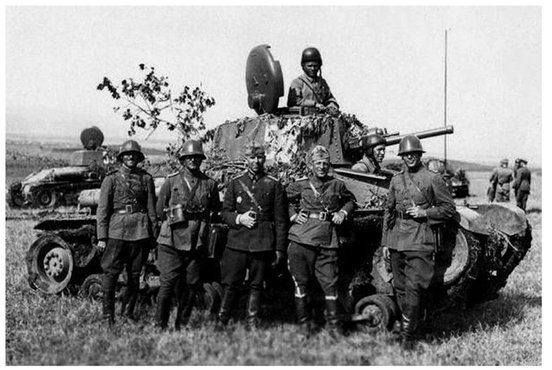
In April 1941 King Boris of Bulgaria sided with Adolf Hitler and supported the Nazi invasion of Greece and Yugoslavia by occupying Eastern Macedonia and Western Trace. Like most East European armies of the time, the Bulgarians were woefully ill-equipped to conduct mechanised warfare.
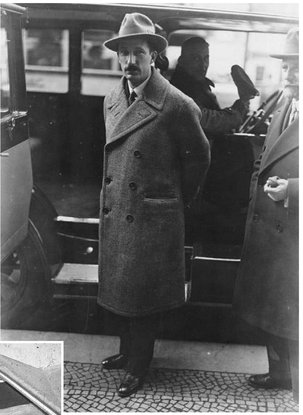
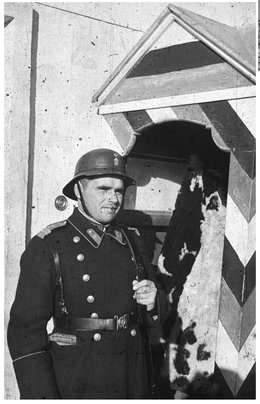
This Bulgarian border guard typifies the antiquated nature of the Bulgarian armed forces. King Boris was able to muster in excess of twenty infantry divisions. However, he only used his reservist units in the Balkans for occupation duties; as well as terrorising the Macedonians they soon came to blows with Hitler’s other allies in the region such as the Italians.
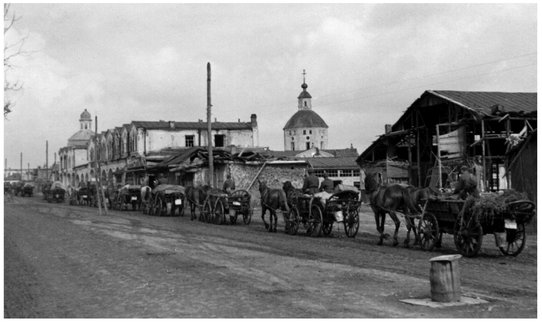
Like all the other East European armies in 1941 the Bulgarian Army relied on infantry divisions supported by horse-drawn transport–mechanisation was at its most rudimentary stages. The reality was that little had changed since the First World War.
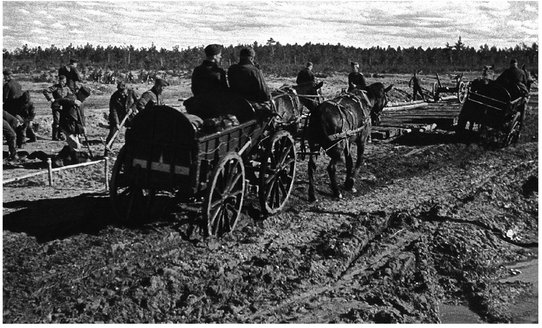
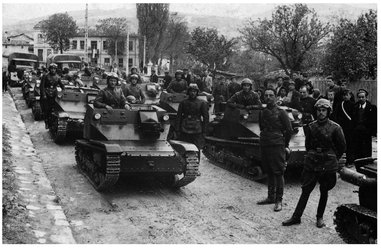
Again like their neighbours the Bulgarians’ first experience with tanks was with the Italian-supplied Carro Veloce L3 tankette. This, though, was not a true tank at all but simply a lightly armoured machine-gun carrier. This massed column of at least a dozen tankettes might look impressive but up against heavier tanks and anti-tank guns would not last long.
More Bulgarian tank crews with their camouflaged Italian L3. These along with Czech LT-35s and French R-35s were used to form the Bulgarian 1st Tank Regiment.
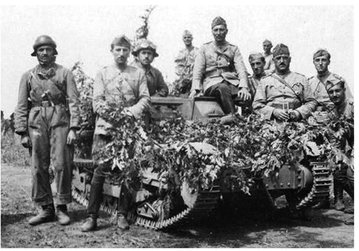
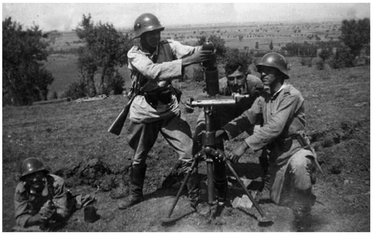
A Bulgarian mortar crew; note their M1938 helmets (similar to the earlier M1936 with the same semi-circular crown, but lacking the slight frontal crest). The design was clearly influenced by those worn by the German Army.
German instructors were sent to train Bulgarian tank crews at Plovdiv as Hitler hoped that King Boris would join the war on the Eastern Front. These trainees are posing by a dummy tank that bears a striking resemblance to the Soviet T-34.
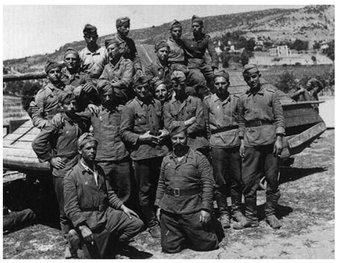
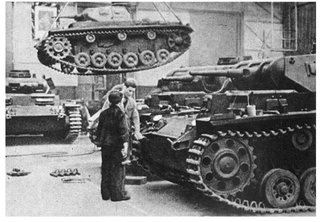
Hitler initially supplied the Bulgarian Army with around ninety captured Czech and French tanks, the first German-built armour consisting of just ten Panzer Mk IIIs being received in 1943.
The Bulgarians were also first supplied with the newer German Panzer Mk IV in 1943 when an initial batch of forty-six arrived in Sofia; these were followed by a similar number the following year. They were used to equip the Bulgarian 1st Armoured Brigade formed in October 1943. In total Bulgaria received 264 tanks and assault guns from Hitler during 1940–44.
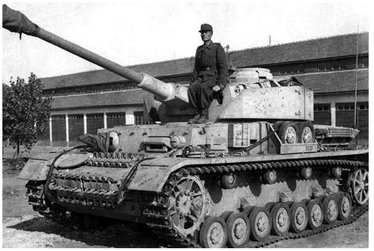
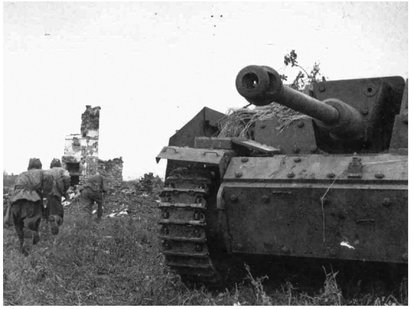
The Bulgarians received three batches of StuG IIIs totalling fifty-five assault guns used to form two Assault-Gun Battalions that became operational in late summer 1944. When Bulgaria defected, the Germans disarmed the two Bulgarian Armies stationed in Yugoslavia but were unable to seize the equipment at Plovdiv after the 1st Armoured Brigade put on a show of force.
The Bulgarians detested their French-built tanks; in particular the Renault R-35s proved to be unreliable and were issued to Bulgarian border units and police. In 1944 Hitler supplied captured French Hotchkiss H-39s (seen here) and Somua S-35s and these went the same way.
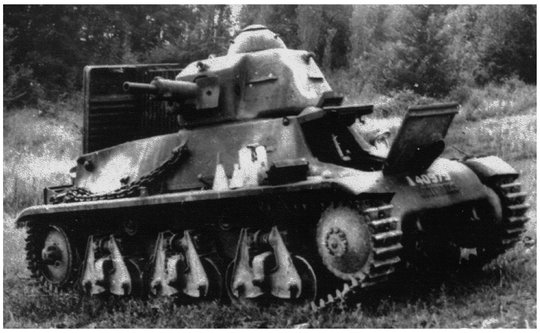
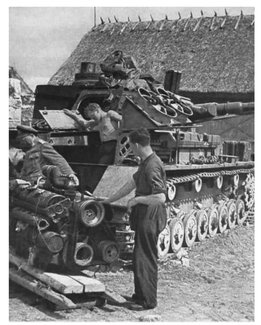
Inevitably with the panzers came instructors and mechanics to train the crews; this also ensured that the Germans retained an element of control over the equipment supplied to their not altogether reliable allies.
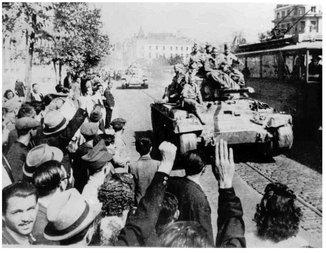
British-supplied Valentine tanks serving with the Red Army roll into Sofia on 15 September 1944. The Bulgarians did not resist and had little choice but to side with the Russians; they launched their panzers against the German Army in Yugoslavia.
Soviet T-34/85 tanks on the streets. Turkey was Bulgaria’s traditional foe and the Bulgarian Army only had four line divisions facing the Soviet Union and nothing that could really stop such powerful tanks as these.
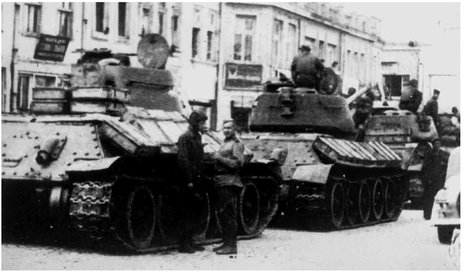
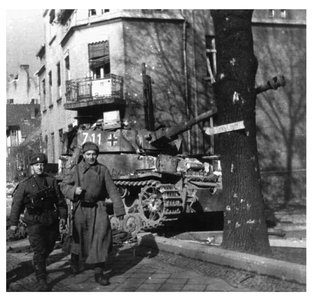
Soviet infantry plod past a knocked-out Panzer Mk IV. Hitler’s plans of setting up a Bulgarian tank force were swiftly dashed and the equipment he supplied ended up being turned on the German Army. By 1944 his Axis allies were proving to be a house of cards that fell swiftly in the face of Stalin’s onslaught.
The Bulgarian 1st Armoured Brigade went into action against its former allies on 8 October 1944. Although it gave a good account of itself four days later at Bela Palanka, it ran into well dug-in German 88mm anti-tank guns and lost five Panzer Mk IVs.
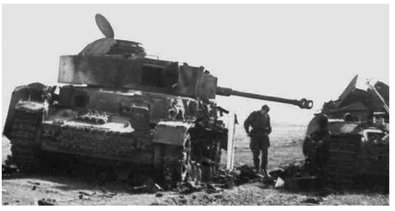
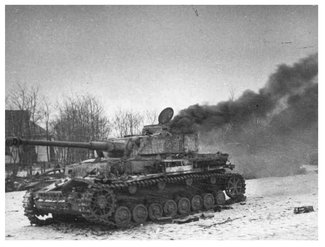
By late November 1944 the Bulgarian panzers were in Pristina; notably most of the brigade’s losses were due to breakdowns rather than combat. With most of the Panzer IVs and StuG IIIs gone, Bulgarian LT-35s saw some action with the Red Army in Hungary in the closing months of the war. Thus ended King Boris’s Bulgarian panzers.